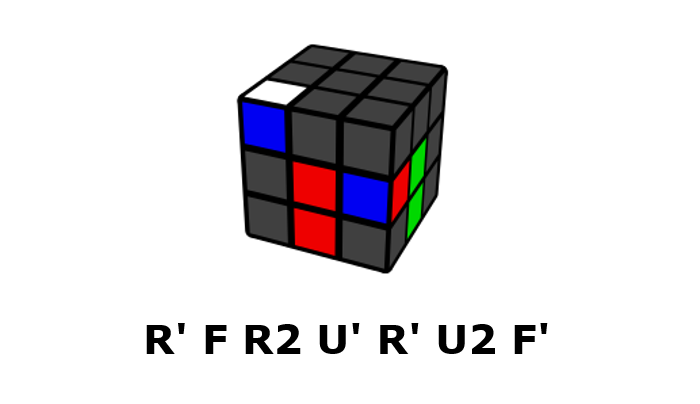The Cube Simulator
Practice
Level 1
Level 2
Level 3
Drag the cube to move
Face Turns
The basic moves are Up, Down, Right, Left, Front, and Back.
Each move indicated to turn that side clockwise, as if you were facing that side.
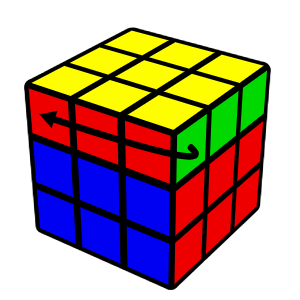
U
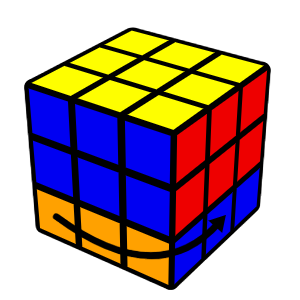
D
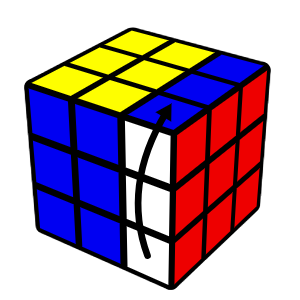
R
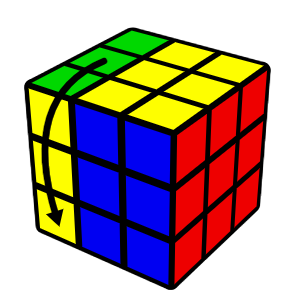
L
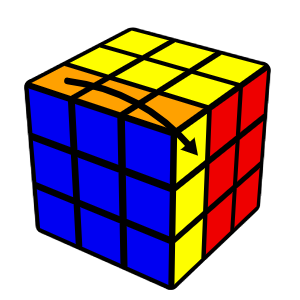
F
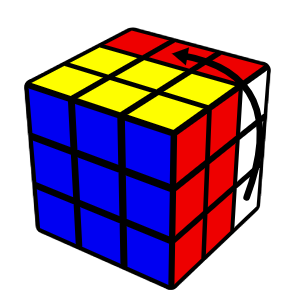
B
An apostrophe (pronounceded as prime) indicates to turn that side in the opposite direction (anti-clockwise).
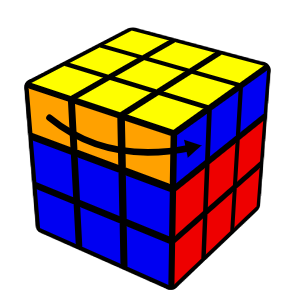
U'
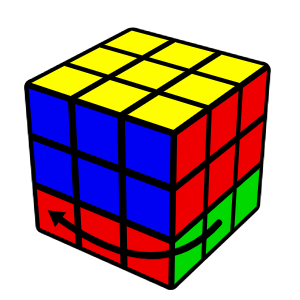
D'
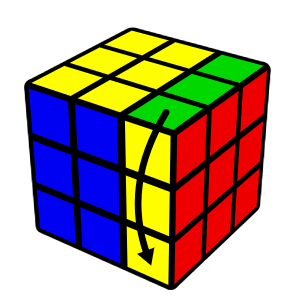
R'
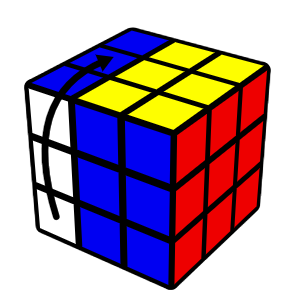
L'
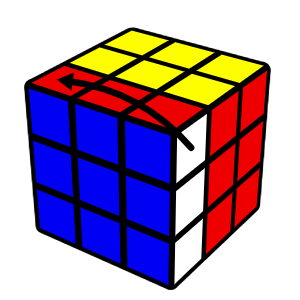
F'
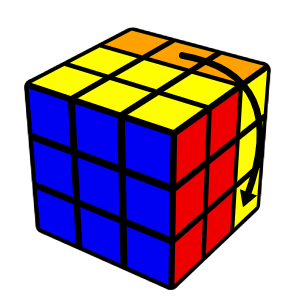
B'
The number 2 indicates to turn that side twice.
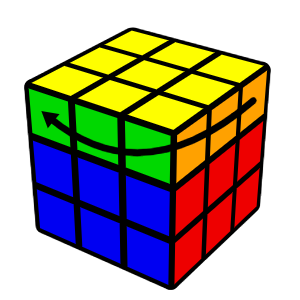
U2
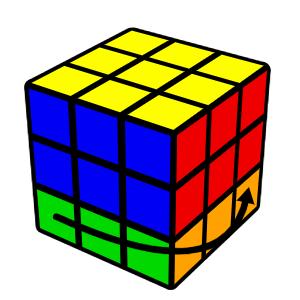
D2
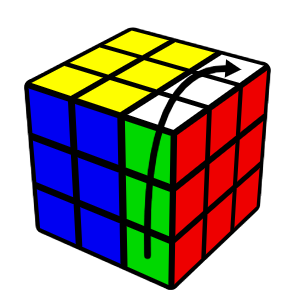
R2
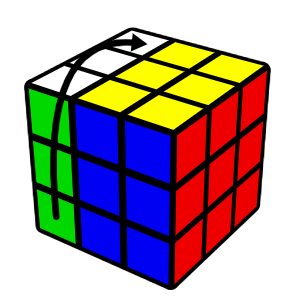
L2
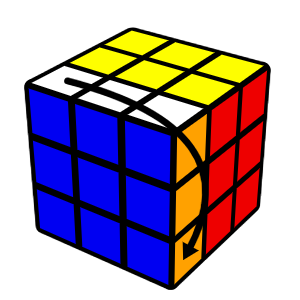
F2
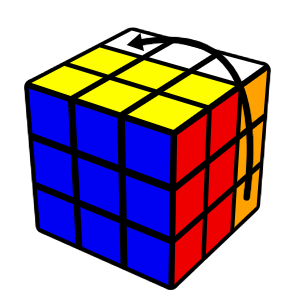
B2
Note: Double moves such as U2 can be done in any direction (clockwise or anti-clockwise). The direction is specified with an apostrophe such as U2 or U2' (to show fingertricks), but it's not prevalent.
Wide Moves
Wide moves turn 2 layers at once. They are written in 2 ways:
Lower case: u, d, r, l, f, b
Ending in w: Uw, Dw, Rw, Lw, Fw, Bw
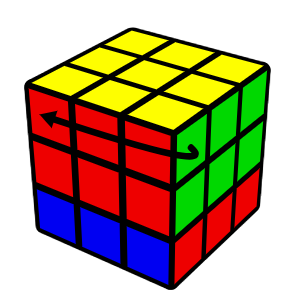
Uw / u
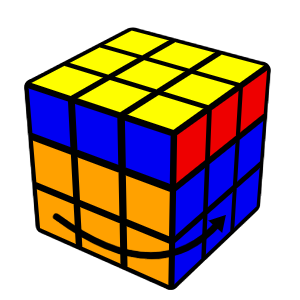
Dw / d
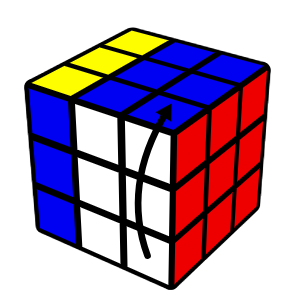
Rw / r
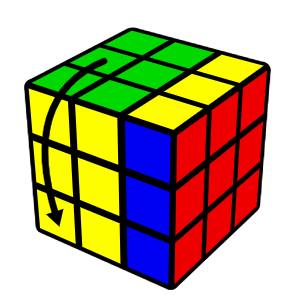
Lw / l
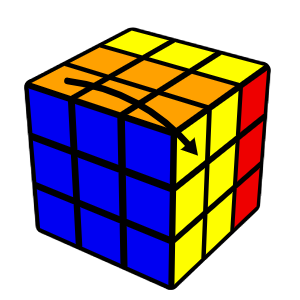
Fw / f
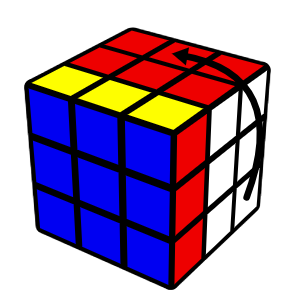
Bw / b
There is also Uw' and Uw2, etc.
Slice Moves
Slice moves only turn the middle layer. They are written as M, E, and S.
M follows the L direction, E follows the D direction, S follows the F direction.
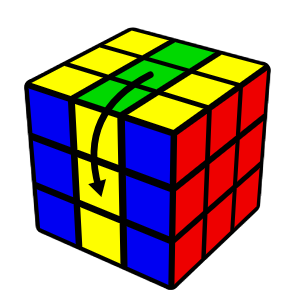
M
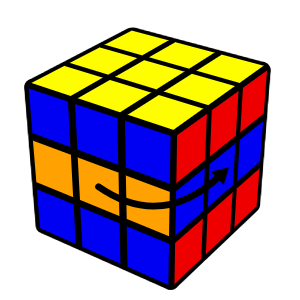
E
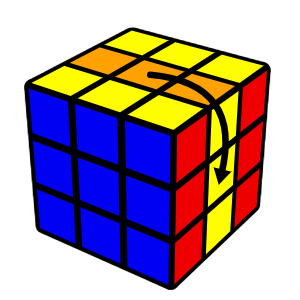
S
There is also M' and M2, etc.
Memory Trick: M follows the same direction as L because M is closer to L than R in the alphabet. The same idea applies for E (follows D instead of U) and S (follows F instead of B).
Cube Rotations
Cube rotations rotate the cube. They are written as x, y, z.
x follows the R direction, y follows the U direction, z follows the F direction.
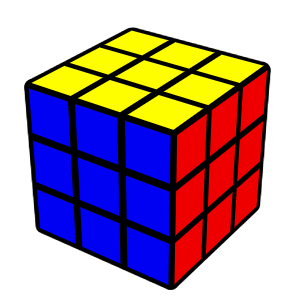
No Rotation

x
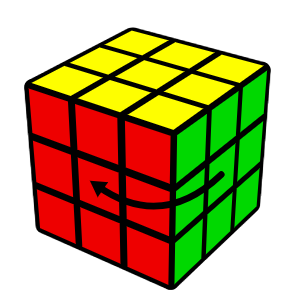
y
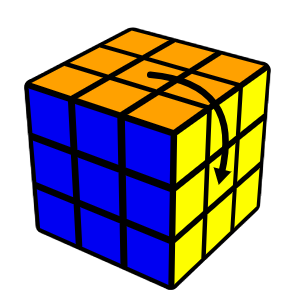
z
There is also x' and x2, etc.
Note: The default position of the cube is White (Top), Green (Front), Red (Right).
Memory Trick: x follows the same direction as R because x is closer to R than L in the alphabet. The same idea applies for y (follows U instead of D) and z (follows F instead of B).
Download the Basic Cheat Sheet
Credits
Step 1. White Cross
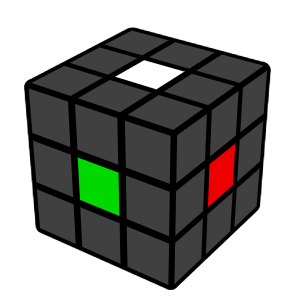

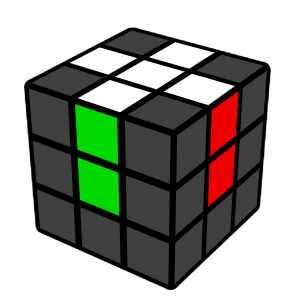
Keep the white center piece on top, and find an edge in the bottom layer that has white.
Note: A center piece has only 1 color and an edge piece has only 2 colors.
Look at the edge piece's other color (not white), and turn the bottom layer so that the edge is under the center of the respective color.
Rotate that face to bring the edge on the white center piece/layer.
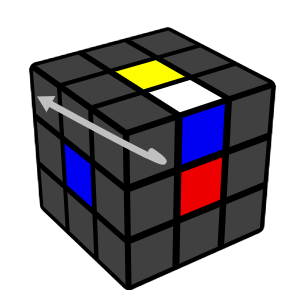
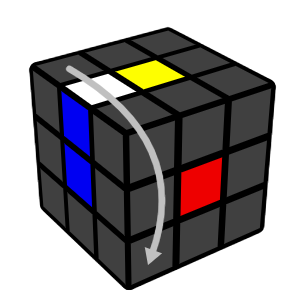
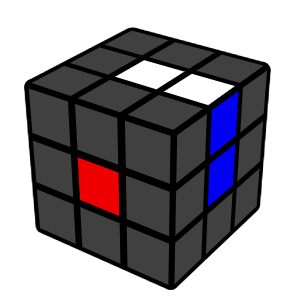
Another example:
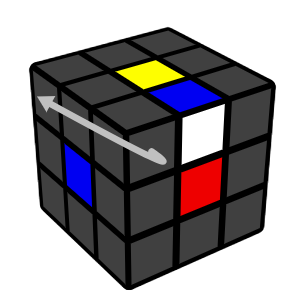
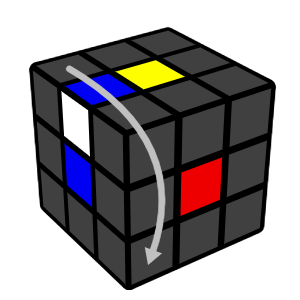
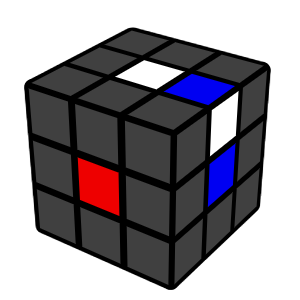
Anytime an edge piece is flipped/inverted (an example above), fix it by doing the following moves:
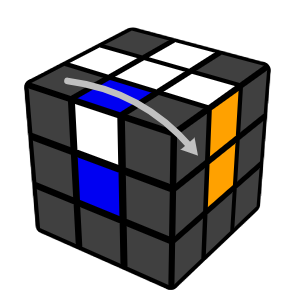
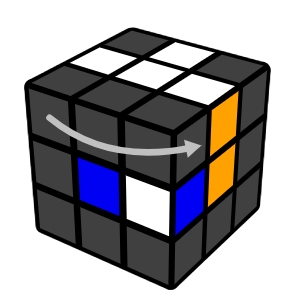
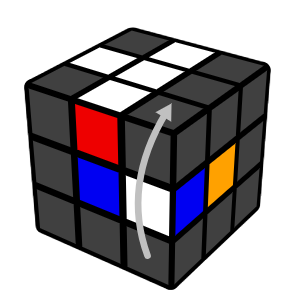
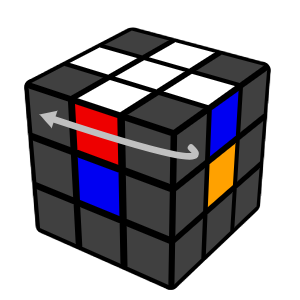
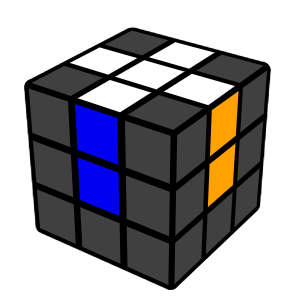
Anytime you find a white edge piece that is not in the bottom layer, you can move it in the bottom layer by doing the following:
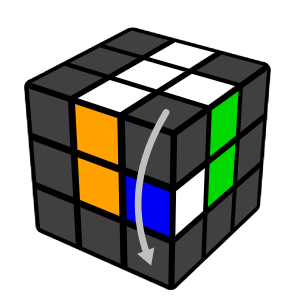
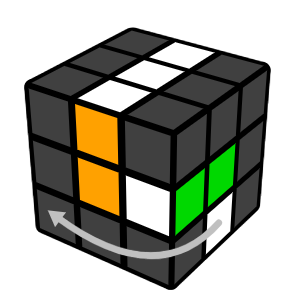
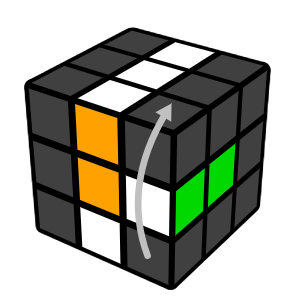
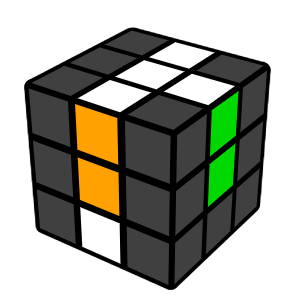
Then simply solve it like you would do for any white edge piece in the bottom layer.
Solve all the 4 white edge pieces to make the white cross. Make sure to look at both colors on each piece to not mess up with inserting the edge inverted.
Step 2. First Layer
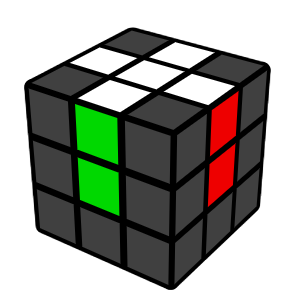

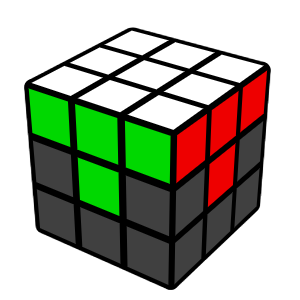
Hold the white cross at the bottom (yellow on top).
Before solving anything, do this 4-move sequence repeatedly until you've memorized it. It will help you later on!
Right handed 4-moves:
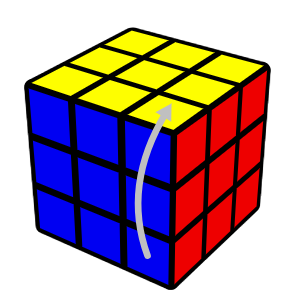
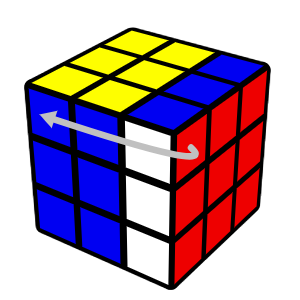
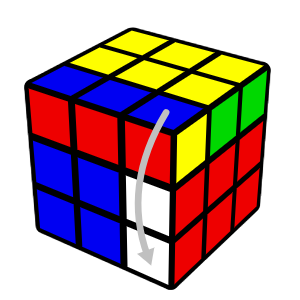
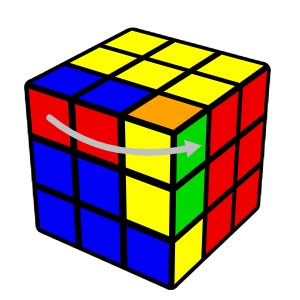
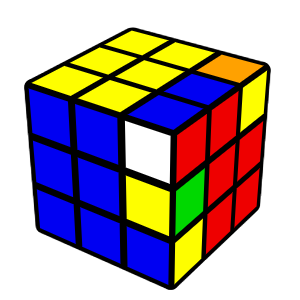
Left handed 4-moves:
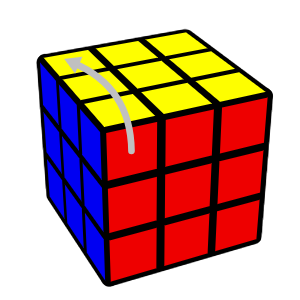
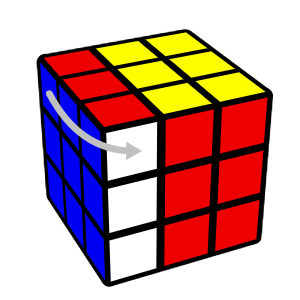
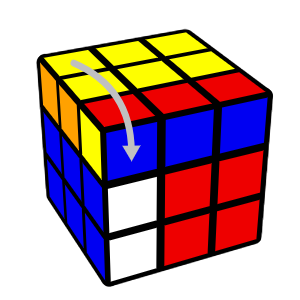
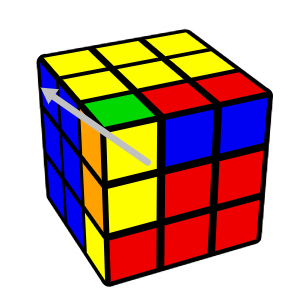
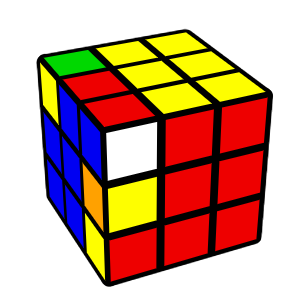
Now, we'll use the 4-moves to solve the first layer.
With the cross at bottom, find a corner piece in the top layer (yellow layer) that has white. Turn the top layer so the surrounding centers match the colors on the corner.
Note: A corner has three colors.
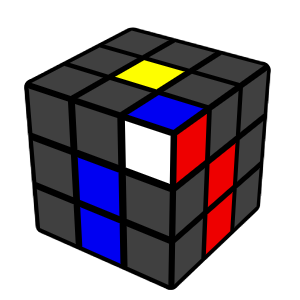
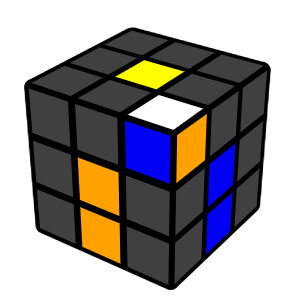
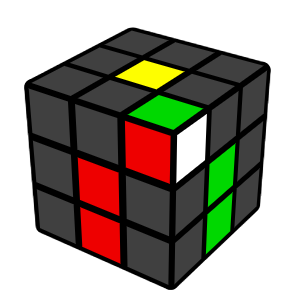
Hold the cube so the corner piece is on the front/right, and repeat the 4-moves until the corner is solved.
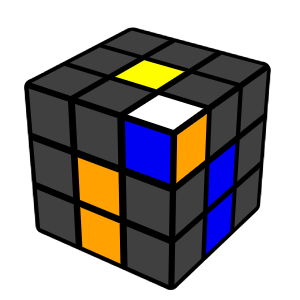
Right
4-moves

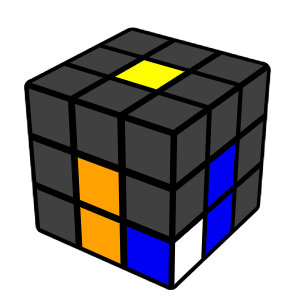
Right
4-moves

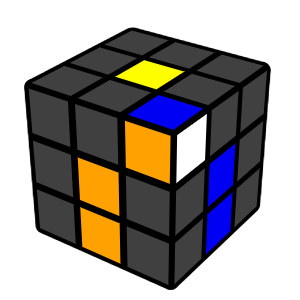
Right
4-moves

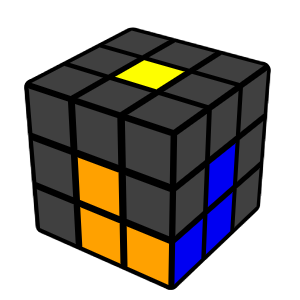
You can also use the left 4-moves if you hold the piece on the front/left to start.
Repeat until all of the first layer corners are solved. If find a white corner incorrectly stuck in the bottom layer, you can bring it into the top layer by holding it on the front/right and doing the right 4-moves or by holding it on the front/left and doing the left 4-moves.
Step 3. Second Layer
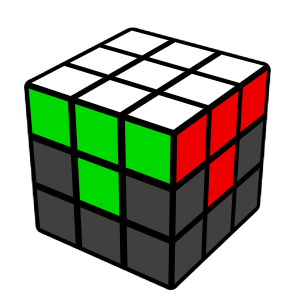

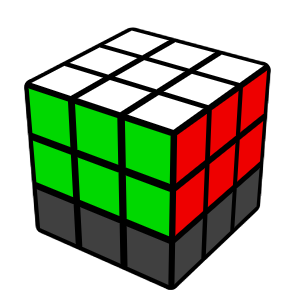
Find an edge piece on the top layer (yellow center on top) that doesn't have yellow as either of its pieces.
Keep turning the top layer until the edge pieces matches a center.
Face the matched piece and check if the top color matches the right or left center.
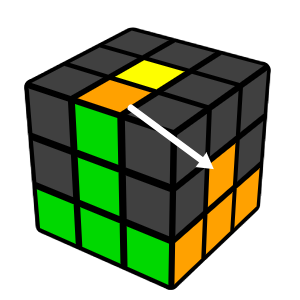
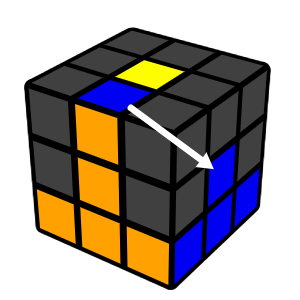
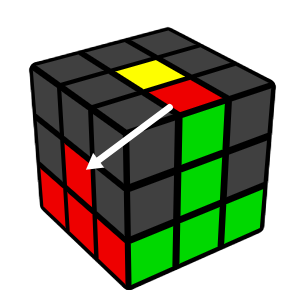
If it matches the right side, do the following moves:
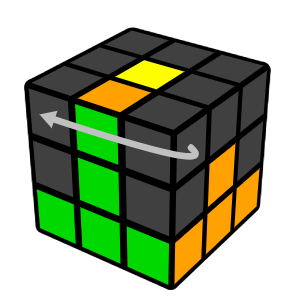
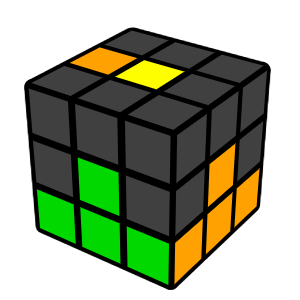
Right
4-moves

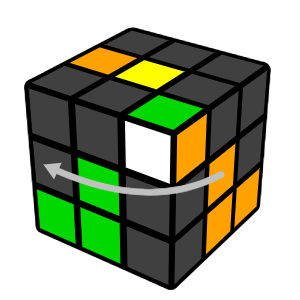
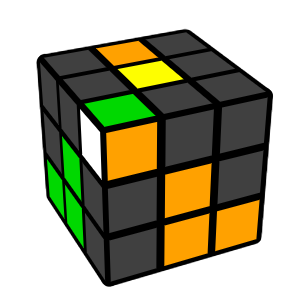
Left
4-moves

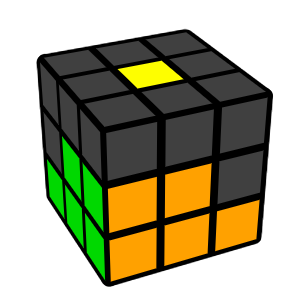
How to memorize this algorithm:
Turn the top with your right hand
Do the right 4-moves
Rotate the cube to face the right side
Do the left 4-moves
If it matches the left side, do the following moves:
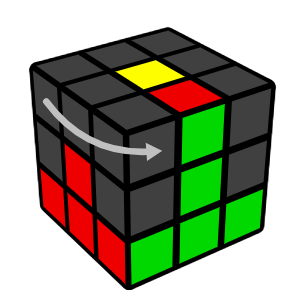
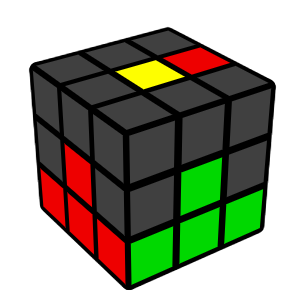
Left
4-moves

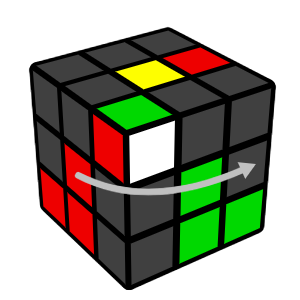
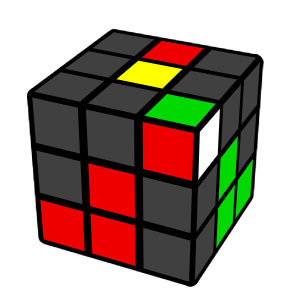
Right
4-moves

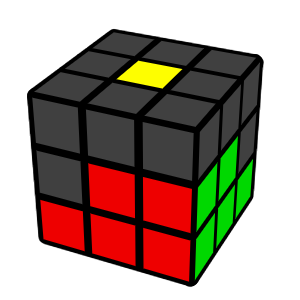
How to memorize this algorithm:
Turn the top with your left hand
Do the left 4-moves
Rotate the cube to face the left side
Do the right 4-moves
Repeat the steps until all the 2nd layer edges are solved.
If an edge you are looking for is stuck somewhere in the 2nd layer, move any edge into its spot using one of the 2 algorithms above. This will cause the edge to come out into the top layer.
Step 4. Yellow Cross
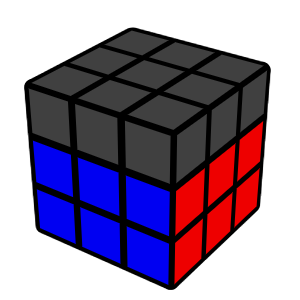

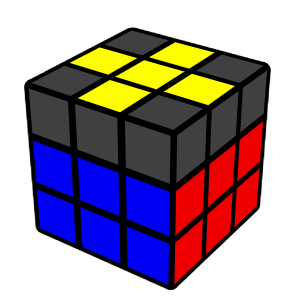
Hold the cube to match one of the following (ignore the corner pieces):
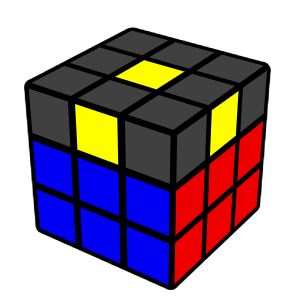
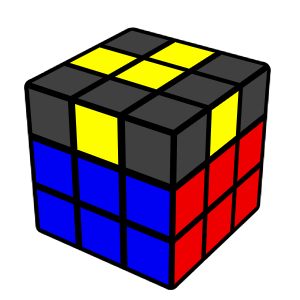
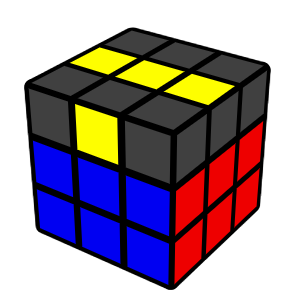
Then do the following moves:
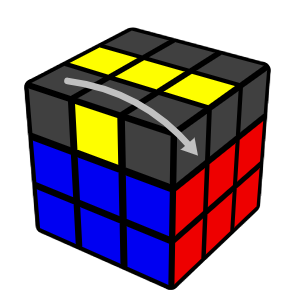
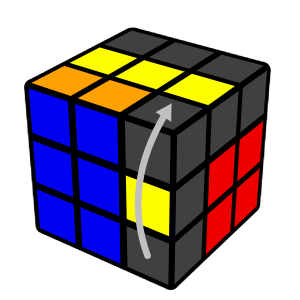
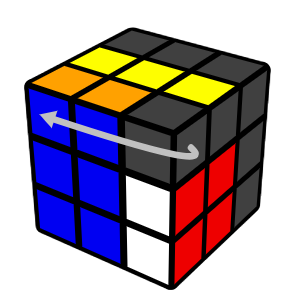
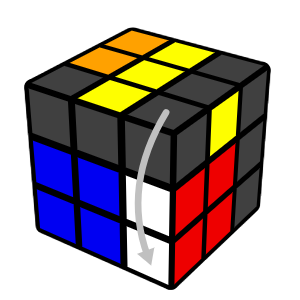
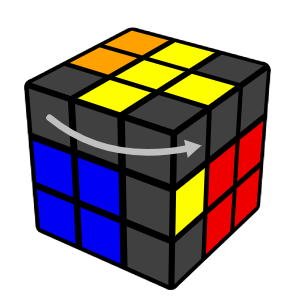
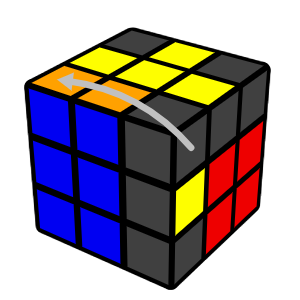
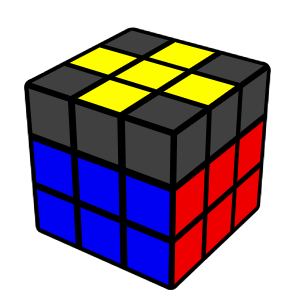
How to memorize this algorithm:
Turn the front clockwise
Do the 4-move sequence
Rotate the cube to face the right side
Turn the front anti-clockwise
If the cross is not solved yet, hold the cube to match the new case and repeat.
Note: Focus on the colors on edge pieces, and not corner pieces. If you have 1 or 3 edge pieces facing up, your cube is unsolvable, and needs to be taken apart and reassembled.
Step 5. Match Cross Colors
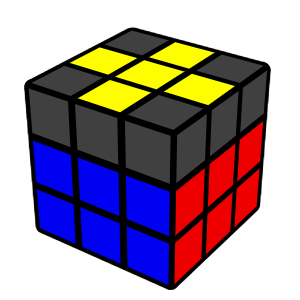

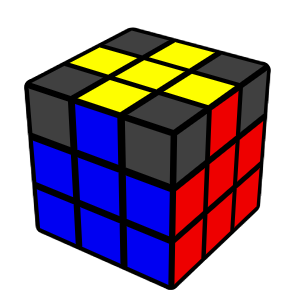
Turn the top face until 2 cross pieces match the side color (if all 4 match, you have finished this step!
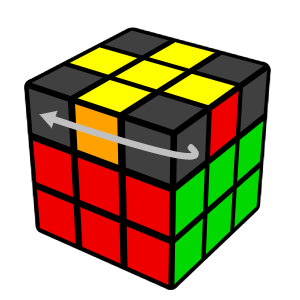

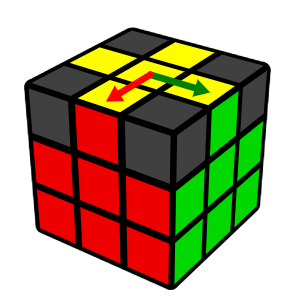
Hold the 2 matching edges at the back/right. If they are across from each other, hold them in any way.
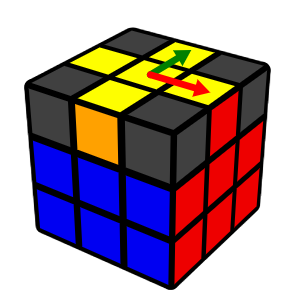
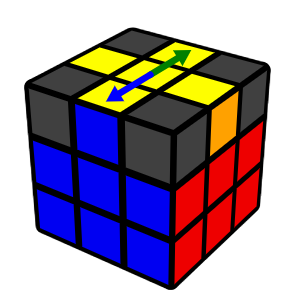
Then do the following moves:
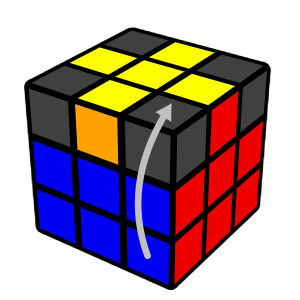
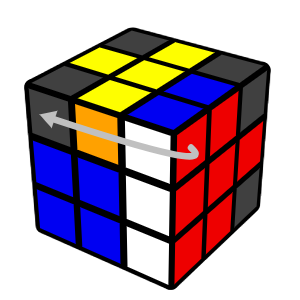
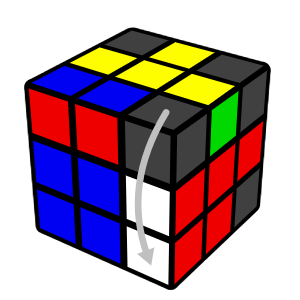
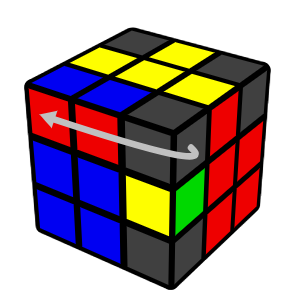
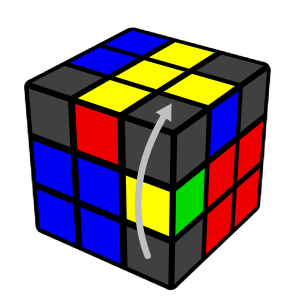
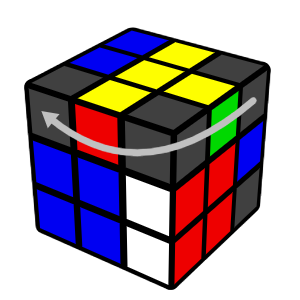
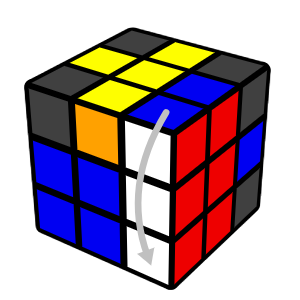
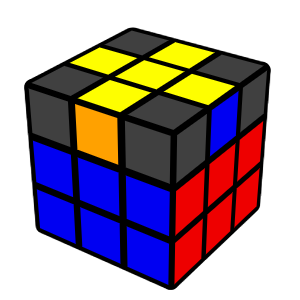
How to memorize this algorithm:
The first 3 moves of the 4-move sequence
Look at the pair of pieces from the bottom.
Watch how they move away, and then back into the bottom.
Turn the top to match all 4 colors. If you can only match 2 colors, then repeat this step.
Step 6. Match Corners
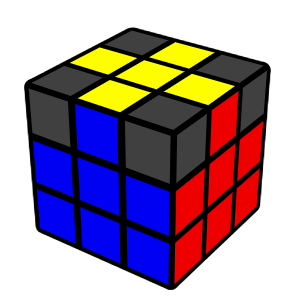

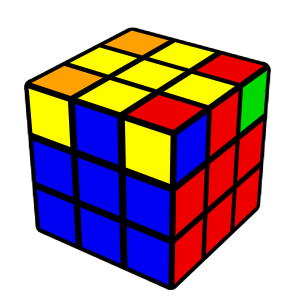
A corner is in the correct position if all 3 colors on the piece match the surrounding colors.
Examples of corner pieces in the correct position:
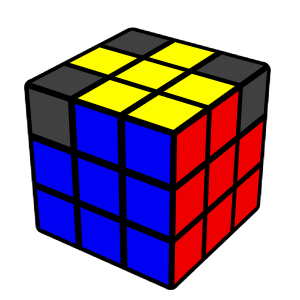
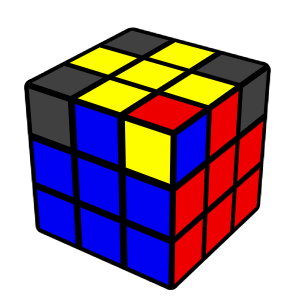
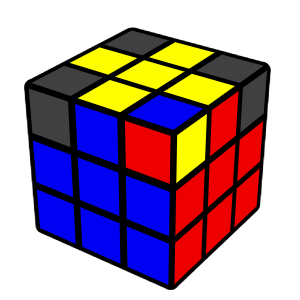
If 1 corner is correct, hold it in the front/right (if 0 are correct, hold any corner in the front/right).
Then do the following moves:
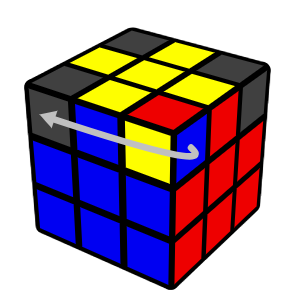
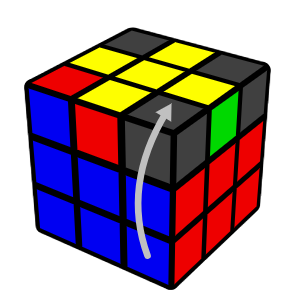
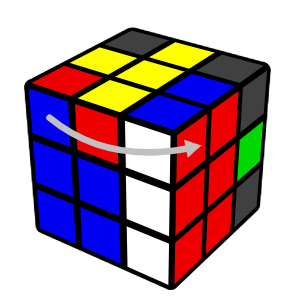
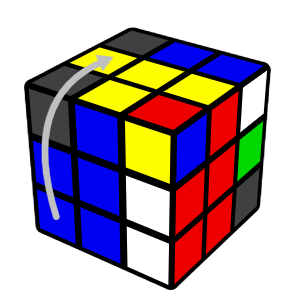
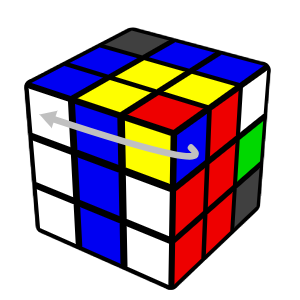
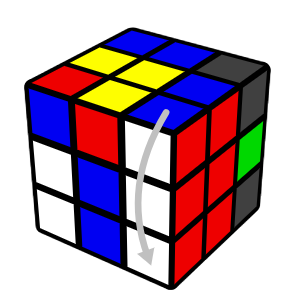
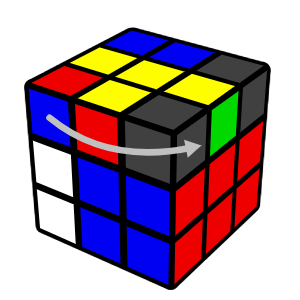
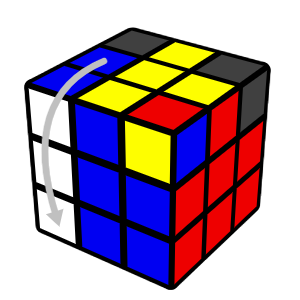
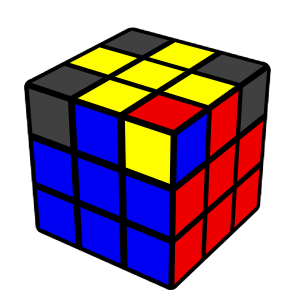
How to memorize this algorithm:
Turn the top with your right hand, then turn the right side up
Turn the top with your left hand, then turn the left side up
Repeat, but go down instead of up
Check if all 4 corners are in the correct position. If not, hold a correct corner on the front/right and repeat.
Note:If you have only 2 corners in the correct position, your cube is unsolvable, and needs to be taken apart and reassembled.
Step 7. Solve The Cube!
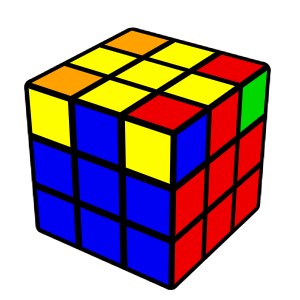

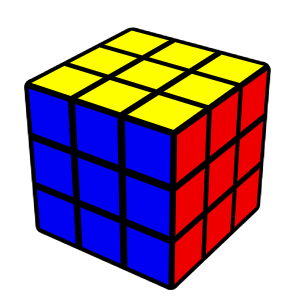
It is very easy to make a mistake during this step, so I recommend reading the whole thing, including the common mistakes, before attempting it.
Turn the cube over so that the unsolved corners are all in the bottom layer.
You may have 2, 3, or 4 unsolved corner pieces.
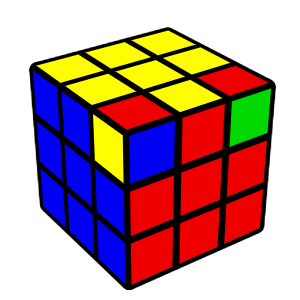
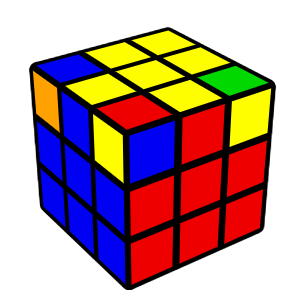
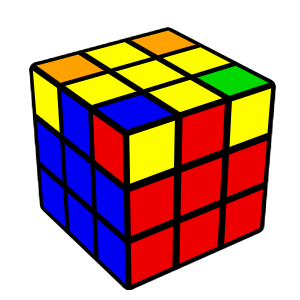
Repeatedly do the 4-move sequence until the front/right corner is solved (has yellow on the bottom).
Then turn the bottom layer (not the whole cube) to bring an unsolved corner to the front/right. Repeat until the whole cube is solved.
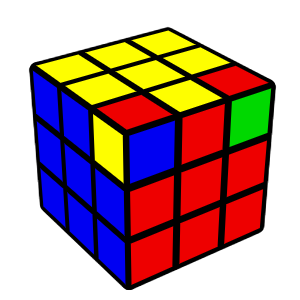
Repeat 4-moves

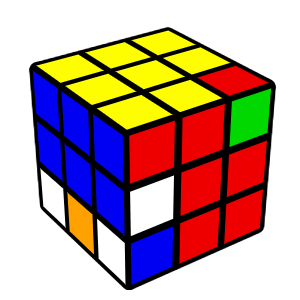
Turn the bottom

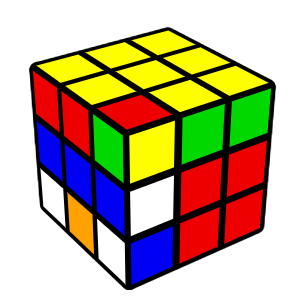
Repeat 4-moves

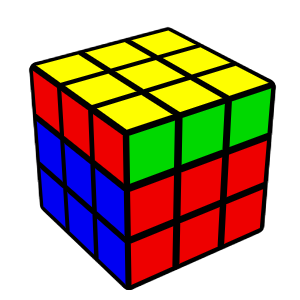
Turn the bottom

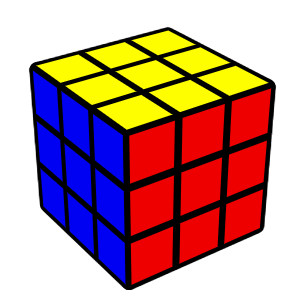
Common mistakes:
Turning the whole cube to get the next corner to the bottom/right.
Make sure you turn only the bottom layer.Not finishing the 4-moves because the corner is solved after 3 moves.
Make sure you always finish the 4-moves.
Note: If you only have 1 corner unsolved while the rest of the cube is solved, or if you followed step 7 correctly but it does not work, then your cube is unsolvable, and needs to be taken apart and reassembled.
Credits
Cross, First 2 Layers (F2L), Orientation, Permutation (CFOP) is the most popular method amongst speedcubers. A method used by most of the 3x3 world record holders. This method is also known as the Fridrich's Method.
Note: It is recommended to go through the cube notations and the beginner's method before trying CFOP.
Step 1. Cross



You should already be familiar with the cross in the beginner's method.
With the right practice, the cross can be done within 8 moves or to be precise, within 5 seconds.
Step 2. F2L
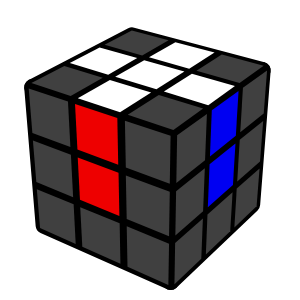

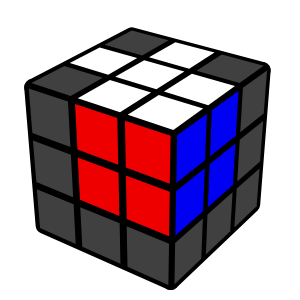

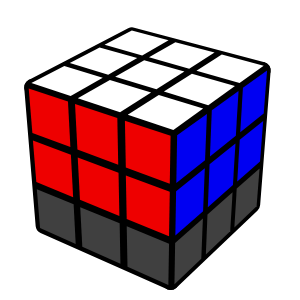
Instead of solving layer by layer, with F2L you can solve 2 layers at the same time. The name goes by First 2 Layers. Though, the concepts are harder than the beginner's method, with some practice F2L is much faster than the beginner's method.
F2L can help you save 20 moves per solve. You should definitely give it a try!
Step 3. OLL
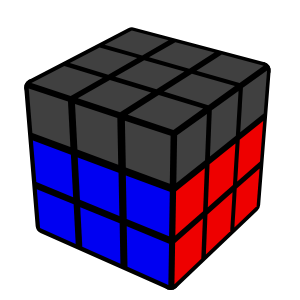

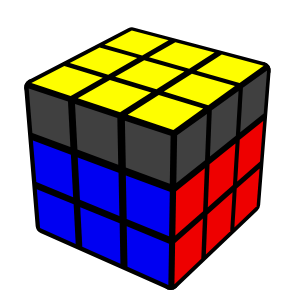
Orientation of the Last Layer (OLL) solves the whole yellow by applying one of 52 algorithms. Don't worry, beginner OLL requires only 10 algorithms.
Beginner OLL (2-Look OLL) has 2 steps:
Orient the edges (3 algorithms)
Orient the corners (7 algorithms)
Some of these algorithms have been taught in the beginner's method. Other algorithms can be memorized by patterns — a common technique for memorizing algorithms.
Step 4. PLL
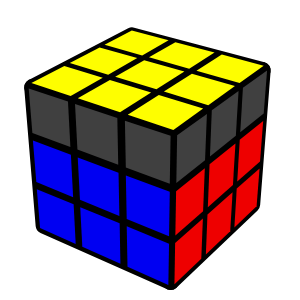

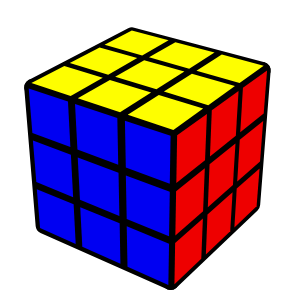
Permutation of the Last Layer (OLL) solves the cube and has 16 total algorithms. Don't worry, beginner PLL requires only 6 algorithms.
Beginner PLL (2-Look PLL) has 2 steps:
Solve the corners (2 algorithms)
Solve the edges (4 algorithms)
The algorithms are quite easy to understand and can be memorized visually with some practice.
Credits
Happy Cubing!
Most used 3x3 Algorithms (from CubeSkills):
Intermediate
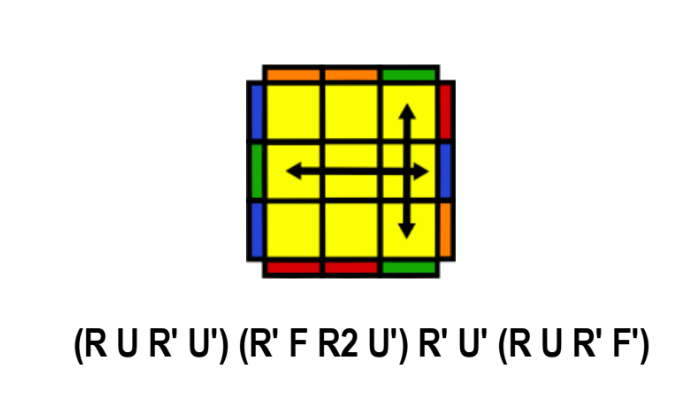

PLL Algorithms
Intermediate
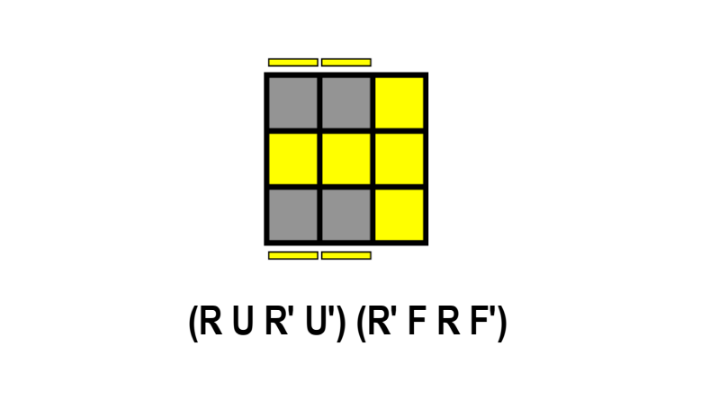

OLL Algorithms
Advanced
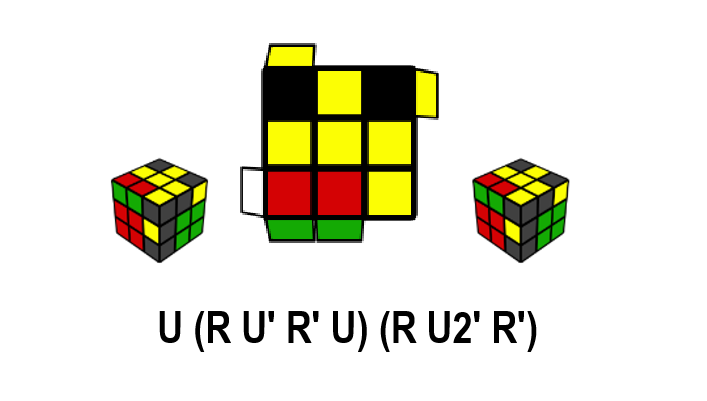

WV Algorithms
Advanced
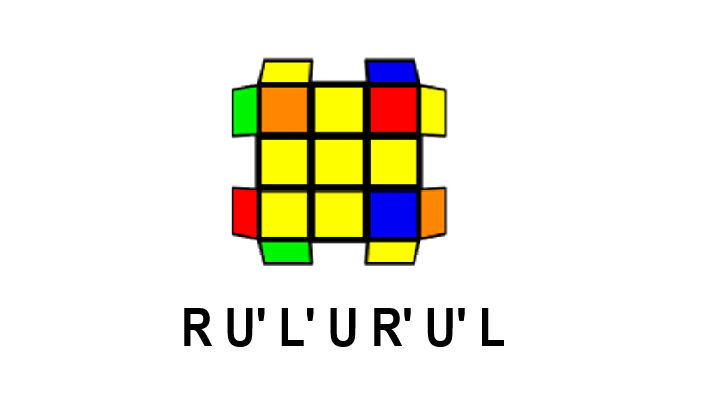

COLL Algorithms
Advanced
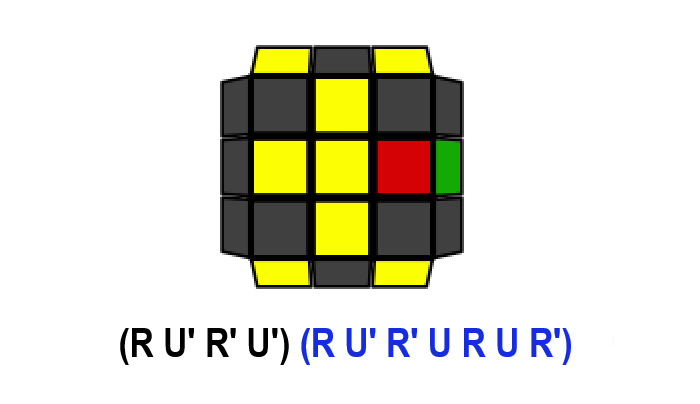

BLE Algorithms
Advanced
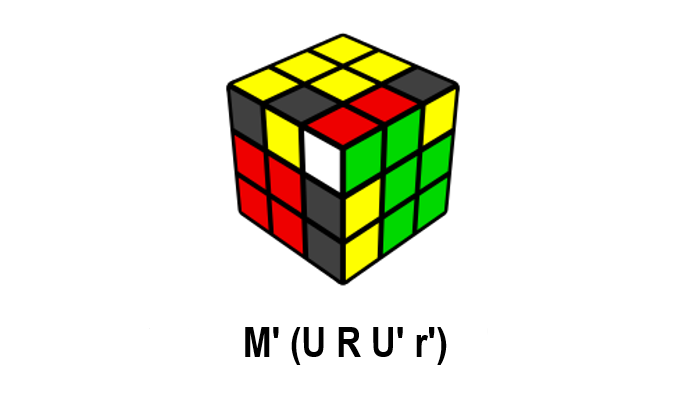

Easy VLS Algorithms
Advanced
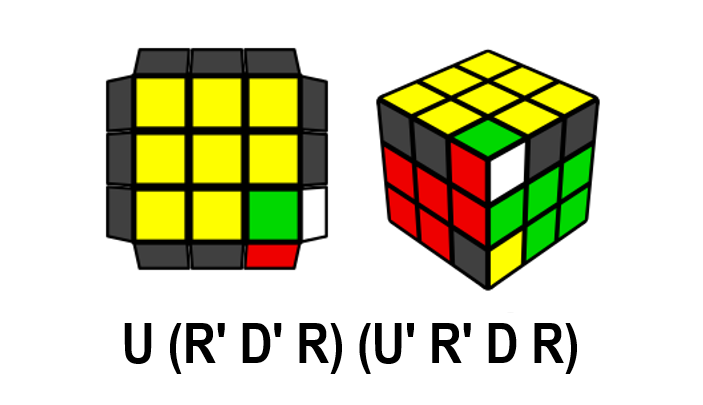

Easy CLS Algorithms
Advanced
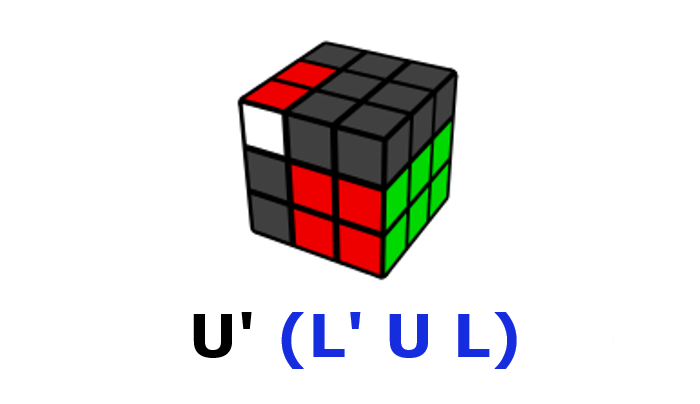

F2L Algorithms (Different slot positions)
Advanced
